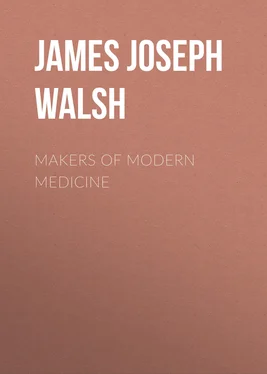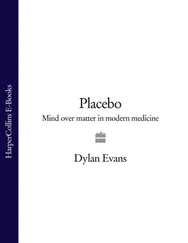James Walsh - Makers of Modern Medicine
Здесь есть возможность читать онлайн «James Walsh - Makers of Modern Medicine» — ознакомительный отрывок электронной книги совершенно бесплатно, а после прочтения отрывка купить полную версию. В некоторых случаях можно слушать аудио, скачать через торрент в формате fb2 и присутствует краткое содержание. Жанр: foreign_prose, Медицина, foreign_antique, на английском языке. Описание произведения, (предисловие) а так же отзывы посетителей доступны на портале библиотеки ЛибКат.
- Название:Makers of Modern Medicine
- Автор:
- Жанр:
- Год:неизвестен
- ISBN:нет данных
- Рейтинг книги:3 / 5. Голосов: 1
-
Избранное:Добавить в избранное
- Отзывы:
-
Ваша оценка:
- 60
- 1
- 2
- 3
- 4
- 5
Makers of Modern Medicine: краткое содержание, описание и аннотация
Предлагаем к чтению аннотацию, описание, краткое содержание или предисловие (зависит от того, что написал сам автор книги «Makers of Modern Medicine»). Если вы не нашли необходимую информацию о книге — напишите в комментариях, мы постараемся отыскать её.
Makers of Modern Medicine — читать онлайн ознакомительный отрывок
Ниже представлен текст книги, разбитый по страницам. Система сохранения места последней прочитанной страницы, позволяет с удобством читать онлайн бесплатно книгу «Makers of Modern Medicine», без необходимости каждый раз заново искать на чём Вы остановились. Поставьте закладку, и сможете в любой момент перейти на страницу, на которой закончили чтение.
Интервал:
Закладка:
Auenbrugger further showed that by means of the sound thus obtained he could demonstrate the size of the heart under varying conditions, and so determine whether it is larger than normal or not. This gave the first inkling as to the discernment of hypertrophy and dilatation of the heart, and was the first step in the modern differential diagnosis of heart diseases. He showed, moreover, that he could, by percussion, outline very exactly the extent to which a consolidation of the lung has taken place, or the height to which an effusion into the pleural cavity reaches. These conclusions and demonstrations require not only the greatest care but the most deliberate confirmation of every detail by comparison of the diagnosis during life with the condition found after death in fatal cases.
Auenbrugger seems to have spared neither time nor labor in this work of confirmation. He made a number of experiments upon dead bodies, injecting fluid into the pleural cavity and then demonstrating by percussion the line of demarcation that indicated the level of the fluid within the chest, as well as the pulmonary conditions that developed because of its presence. In the study of pneumonia and tuberculosis particularly, Auenbrugger spent many hours of patient investigation during his ten years of hospital service. He succeeded not only in demonstrating the presence of consolidation, but also the existence of cavities in the lungs and their size and general character.
Vienna was an ideal place for the development of Auenbrugger's ideas of confirmation. At this time, it must have been one of the most unhealthy places in Europe as regards pulmonary diseases. The city was surrounded by walls that occupied the ground now taken up by the magnificent Ring Strasse and the inhabitants were packed into extremely narrow quarters, The modern municipal sanitary conscience is lax enough in our own day, but at that time it had not been awakened to the slightest sense of duty toward the citizens. Narrow, wandering streets lined by high buildings that made an attaché of the British Legation of Vienna speak of the houses of the city, scarcely more than fifty years ago, as "well-like," were the universal rule.
It must be remembered that the present magnificent Austrian capital, containing, perhaps, the handsomest single street and some of the finest buildings in the world, is entirely a creation of the last half-century. The old city had every cause to be unsanitary. Situated in the valley of the Danube, liable in the spring-time to serious floodings from the capricious, mighty river, which has been brought under control only in recent years at great expense; in an exposed situation, which makes it a veritable temple of the winds during the autumn and winter; it is not surprising that tuberculosis should have been very frequent. Even with all its improvements in recent years, sanitary, hygienic, municipal and domiciliary, Vienna has at the present time one of the highest death rates from tuberculosis in Europe. In Auenbrugger's time there must have been practically unlimited opportunity for the study of pulmonary diseases of all kinds.
How well the brilliant young medical observer took advantage of the opportunities thus afforded him can be judged very well from the passages of his book that refer to chronic pulmonary diseases. He divides the chronic diseases of the thorax in which abnormal percussion sounds are heard into two classes. In the first place, he places those in which the thoracic organs are rendered less capable of resisting disease and become actually affected, because of insidious influences, such as hereditary conditions, depressing circumstances, poverty and poor nutrition. Without really calling it tuberculosis, it is evident that in this group pulmonary consumption is included. The second class consists of affections in which the thoracic organs become diseased from definite, easily recognizable causes. Such are disturbances of the general health in pulmonary affections that follow thoracic disease not completely recovered from. By these diseases Auenbrugger evidently intends cases of pneumonia or other affections of the lungs, or trauma and the like, which are followed by tuberculous processes.
With regard to cavities in the lungs, Auenbrugger was able not only to demonstrate their presence and to show by autopsy records that his localization and determination of their approximate form and size were correct, but he also understood the method of their formation and explains the reasons for certain varieties of cavities that occur. He speaks of two classes of cavity formations. From one kind there is an ichorous discharge; from the other variety the evacuations are purulent. Cavities with non-purulent secretions are situated only in the lung. Abscesses of various kinds–that is, cavities with purulent secretions–may occur in any part, or in any of the organs of the thorax. The lung cavities are usually due to the breaking down of what he calls crude tubercles. Both kinds of cavities may either be closed or have an opening into the bronchi.
Auenbrugger showed very well how to distinguish, by percussion, cavities of various kinds, and set it down as a principle, that before the evacuation of the contents of the cavity percussion over it gave a distinctly dull note, resembling that obtained when the thigh is percussed, while after evacuation, as by copious expectoration, a distinctly resonant note occurred. It is clear from his discussion of the symptoms noted in cavities (at least in the opinion of Dr. Merbach, who wrote a sketch of Auenbrugger's life for the Jahresbericht der Gesellschaft für Natur und Heilkunde in Dresden, in 1861), that Auenbrugger was very near the discovery of auscultation in his study of pulmonary cavities. Auenbrugger says that when a cavity has been located by means of percussion, if the hand be laid over the place beneath which it lies and the patient is asked to cough, the fremitus produced by the pus in the cavity can be felt as it moves under the coughing impulse. This is what we now know as palpation. If instead of using his hand Auenbrugger had applied his ear to the chest, auscultation would have been discovered nearly half a century before Laennec began his work upon the subject. Perhaps Merbach, who was himself a native of Styria and a professor at the University of Gratz, was for patriotic motives more ready than others might be to give Auenbrugger credit for practically discovering auscultation.
Auenbrugger's and Laennec's observations were made on exactly the same sort of clinical material. They were both studying advanced cases of tuberculosis in the hospitals of a great city. Laennec's work was actually not anticipated in the slightest degree however. How Auenbrugger could have made the careful examinations of the chest that he did in thoracic diseases without acquiring some knowledge of the value of the further application of the sense of hearing, which Laennec was to employ so fruitfully in the diagnosis of affections of the lungs and heart, seems to us almost impossible to understand. Discoveries once made, however, always seem so obvious that the wonder is they were not made long before. It takes genius to cross the line into the realm of the hitherto unknown, and the contemporary generation usually occupies itself mainly with making little of the new discovery. Even genius very rarely makes more than one original observation in a lifetime, and it would be too much to expect more from Auenbrugger.
The preface to Auenbrugger's little book is a model of concise directness typical of the man and his ways. As the modest introduction to a work that will ever be a classic in medicine it seems to deserve a place here:
"I present to you, kind reader, a new sign for the detection of diseases of the chest, which I have discovered. It consists in the percussion of the human thorax and the determination of the internal condition of this cavity by the varying resonance of the sounds thus produced. My discoveries in this subject are not committed to paper because of an itch for writing, nor an inordinate desire for theorizing. Seven years of observation have put the subject in order and have clarified it for myself and now I feel that it should be published.
Читать дальшеИнтервал:
Закладка:
Похожие книги на «Makers of Modern Medicine»
Представляем Вашему вниманию похожие книги на «Makers of Modern Medicine» списком для выбора. Мы отобрали схожую по названию и смыслу литературу в надежде предоставить читателям больше вариантов отыскать новые, интересные, ещё непрочитанные произведения.
Обсуждение, отзывы о книге «Makers of Modern Medicine» и просто собственные мнения читателей. Оставьте ваши комментарии, напишите, что Вы думаете о произведении, его смысле или главных героях. Укажите что конкретно понравилось, а что нет, и почему Вы так считаете.












